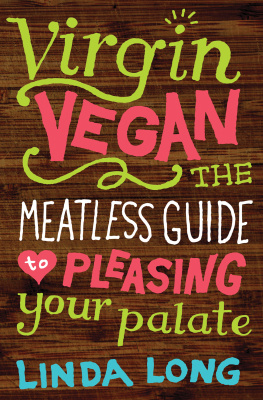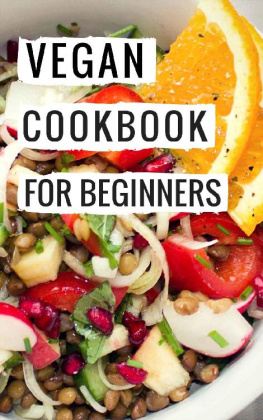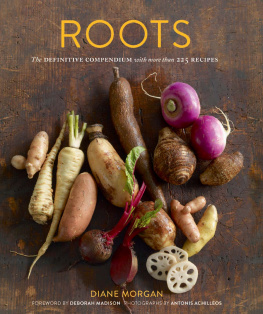True to Your Roots TRUE TO YOUR ROOTS Copyright 2015 by Carla Kelly All rights reserved. No part of this book may be reproduced in any part by any meansgraphic, electronic, or mechanicalwithout the prior written permission of the publisher, except by a reviewer, who may use brief excerpts in a review, or in the case of photocopying in Canada, a license from Access Copyright. ARSENAL PULP PRESS Suite 202211 East Georgia St. Vancouver, BC V6A 1Z6 Canada arsenalpulp.com The publisher gratefully acknowledges the support of the Government of Canada (through the Canada Book Fund) and the Government of British Columbia (through the Book Publishing Tax Credit Program) for its publishing activities.
TRUE TO YOUR ROOTS Copyright 2015 by Carla Kelly All rights reserved. No part of this book may be reproduced in any part by any meansgraphic, electronic, or mechanicalwithout the prior written permission of the publisher, except by a reviewer, who may use brief excerpts in a review, or in the case of photocopying in Canada, a license from Access Copyright. ARSENAL PULP PRESS Suite 202211 East Georgia St. Vancouver, BC V6A 1Z6 Canada arsenalpulp.com The publisher gratefully acknowledges the support of the Government of Canada (through the Canada Book Fund) and the Government of British Columbia (through the Book Publishing Tax Credit Program) for its publishing activities.  The author and publisher assert that the information contained in this book is true and complete to the best of their knowledge. All recommendations are made without the guarantee on the part of the author and publisher.
The author and publisher assert that the information contained in this book is true and complete to the best of their knowledge. All recommendations are made without the guarantee on the part of the author and publisher.
The author and publisher disclaim any liability in connection with the use of this information. For more information, contact the publisher. Note for our UK readers: measurements for non-liquids are for volume, not weight. Design and cover illustration by Gerilee McBride All photographs, prop syling, and food styling by Tracey Kusiewicz / Foodie Photography Editing by Robyn So and Susan Safyan Library and Archives Canada Cataloguing in Publication Kelly, Carla, 1971, author True to your roots: vegan recipes to comfort and nourish you / Carla Kelly. Includes index. Issued in print and electronic formats.
ISBN 978-1-55152-589-1 (epub) 1. Vegan cooking. 2. Cookbooks. I. Title.
TX837.K455 2015 641.5'636 C2015-903458-2 C2015-903459-0 Dedication For my daughters, who truly are growing into the young adults I have always hoped they would. You always make the BEST potatoes: my daughter M, age 13. This is better than ketchup! (about the , p. 186),: my daughter R, age 10. Contents I am pleased to send this, my fourth book-baby, out into the world for your reading and dining pleasure. In True to Your Roots, I celebrate the humble root vegetable in all its many and varied incarnations.
I hope readers will learn a little about these underappreciated plants and be introduced to some new favorites. My wish is that these dishes will expand the repertoire of home cooks and also introduce them to new and appealing vegetables. Root vegetables really are much more than mash. Every recipe in this book has been tested by my team of international recipe testers (and by many of my friends and neighbors), so each recipe will be both tasty and foolproof. The recipes have been approved by vegans and non-vegans alike. However, remaining true to my personally held beliefs and ethics, the recipes are all vegan as well as healthy (health-focused but not -obsessed) and packed with flavor.
For too long the last chosen and least loved, the ugly vegetables are now rising up and claiming their rightful place at the center of the plate. In the recipes that follow, I showcase these nutritional and flavorful powerhouses in a variety of tasty and satisfying ways: healthy breakfast juices, sinfully rich desserts, traditional hot side dishes, refreshing and innovative salads, hearty soups, and some eye-popping, mouth-watering main courses. This book truly has something to tempt everyone to go back to their roots. Carla While the focus in this book is on vegetablesbe they taproots, tubers, rhizomes, corms, or stemsthat grow underground, I also include some that grow underwater or aboveground. At the same time, I havent included roots such as salsify, parsley root, and wasabi because they are harder to find in North America. I employ a root to tip style of cooking (where possible), staying true to the flavors and form of the whole plant and using the greens and leaves of the vegetables in many recipes as well.
I am frequently influenced by the ingredients; often, after making a recipe and tasting the ingredients in one context, I find inspiration and ideas for using them in other contexts. Basic Botany Root vegetables are the swollen parts of biennial (a two-year biological life cycle) and perennial (longer than two-year life span) plants that act as storage facilities for sugars and starches to provide the energy required for either germination or reproduction. As such, roots are packed with macronutrients required for growth (mainly carbohydrates with protein) and micronutrients (vitamins and minerals) to aid in the plants development. These macro- and micronutrients are valuable to us as sources of fuel and for our own health and wellbeing. True root vegetables are those where nutrient storage occurs in the taproot (a single substantial root) of the plant. These come in three shapes: conical (wide at top, tapering like a cone): e.g., carrot and parsnip fusiform (widest in the middle): e.g., radish and rutabaga napiform (wide at top, tapering suddenly): e.g., turnip and beets I have also included: tubers (underground swollen stems or roots): e.g., potatoes and sweet potatoes rhizomes (underground / underwater stems growing horizontally): e.g., lotus root corms (short vertical underground stem with scale-like leaves): e.g., water chestnut and taro stems (aboveground): e.g., kohlrabi Many of the root vegetables are related botanically, albeit distantly, and share a common origin.
Choosing and Storing Root Vegetables Whether youre buying them from a supermarket, health-food store, specialty ethnic market, fruit and vegetable store, or farmers market, or having them delivered to your home, you want to ensure that the vegetables you purchase are giving you the best bang for your buck. Fresh roots should feel firm and pleasantly solid in your hand. The skin should be taut. Avoid bruised roots with spongy or soft spots. Reject roots with slime, brown patches, cracks, sprouting eyes, or shoots. Extra-large roots may be woody inside (especially parsnips, celeriac, and carrots), so stick to those that are small to medium-large, even if you need to purchase more than one.
Smell the root; the aroma should be earthy, not sour or musty. Organic roots, those grown without pesticides or artificial chemicals, are a wonderful option. Organics are guaranteed not to be genetically modified as well. However, they are pricier and not always available. Roots stay fresher longer when stored in a cool, dark, dry, and well-ventilated space. If, like me, you dont have a root cellar in your home, the next best place is the basement (or garage) which, while cool, is never cold enough to freeze.
Its best to keep roots protected from heat-producing appliances (e.g., the refrigerator or stove) and covered with cloth (or inside a cloth bag) to keep them away from excess light. Although roots can be stored in the crisper drawer of the refrigerator, they usually last longer and retain their flavor stored in a cool, dry place. As a general rule of thumb, if your grocery store does not refrigerate the vegetables, you shouldnt either (unless they have been cut). The majority of roots are best used within a week after purchase. 
 To Raw, Or Not to Raw?The following root vegetablesby far the majority of those availableare suitable for eating raw, juicing, and dehydrating: carrots, beets, sweet potatoes (white- and orange-fleshed), jicama, celeriac, turnips, rutabagas, parsnips, radishes, daikon, sunchokes, kohlrabi, water chestnuts, oca, burdock, horseradish.Never eat the following roots unless they are completely cooked to destroy the toxins: potatoes, yuca, tropical yams, taro, lotus root.
To Raw, Or Not to Raw?The following root vegetablesby far the majority of those availableare suitable for eating raw, juicing, and dehydrating: carrots, beets, sweet potatoes (white- and orange-fleshed), jicama, celeriac, turnips, rutabagas, parsnips, radishes, daikon, sunchokes, kohlrabi, water chestnuts, oca, burdock, horseradish.Never eat the following roots unless they are completely cooked to destroy the toxins: potatoes, yuca, tropical yams, taro, lotus root.
Next page










 TRUE TO YOUR ROOTS Copyright 2015 by Carla Kelly All rights reserved. No part of this book may be reproduced in any part by any meansgraphic, electronic, or mechanicalwithout the prior written permission of the publisher, except by a reviewer, who may use brief excerpts in a review, or in the case of photocopying in Canada, a license from Access Copyright. ARSENAL PULP PRESS Suite 202211 East Georgia St. Vancouver, BC V6A 1Z6 Canada arsenalpulp.com The publisher gratefully acknowledges the support of the Government of Canada (through the Canada Book Fund) and the Government of British Columbia (through the Book Publishing Tax Credit Program) for its publishing activities.
TRUE TO YOUR ROOTS Copyright 2015 by Carla Kelly All rights reserved. No part of this book may be reproduced in any part by any meansgraphic, electronic, or mechanicalwithout the prior written permission of the publisher, except by a reviewer, who may use brief excerpts in a review, or in the case of photocopying in Canada, a license from Access Copyright. ARSENAL PULP PRESS Suite 202211 East Georgia St. Vancouver, BC V6A 1Z6 Canada arsenalpulp.com The publisher gratefully acknowledges the support of the Government of Canada (through the Canada Book Fund) and the Government of British Columbia (through the Book Publishing Tax Credit Program) for its publishing activities.  The author and publisher assert that the information contained in this book is true and complete to the best of their knowledge. All recommendations are made without the guarantee on the part of the author and publisher.
The author and publisher assert that the information contained in this book is true and complete to the best of their knowledge. All recommendations are made without the guarantee on the part of the author and publisher.